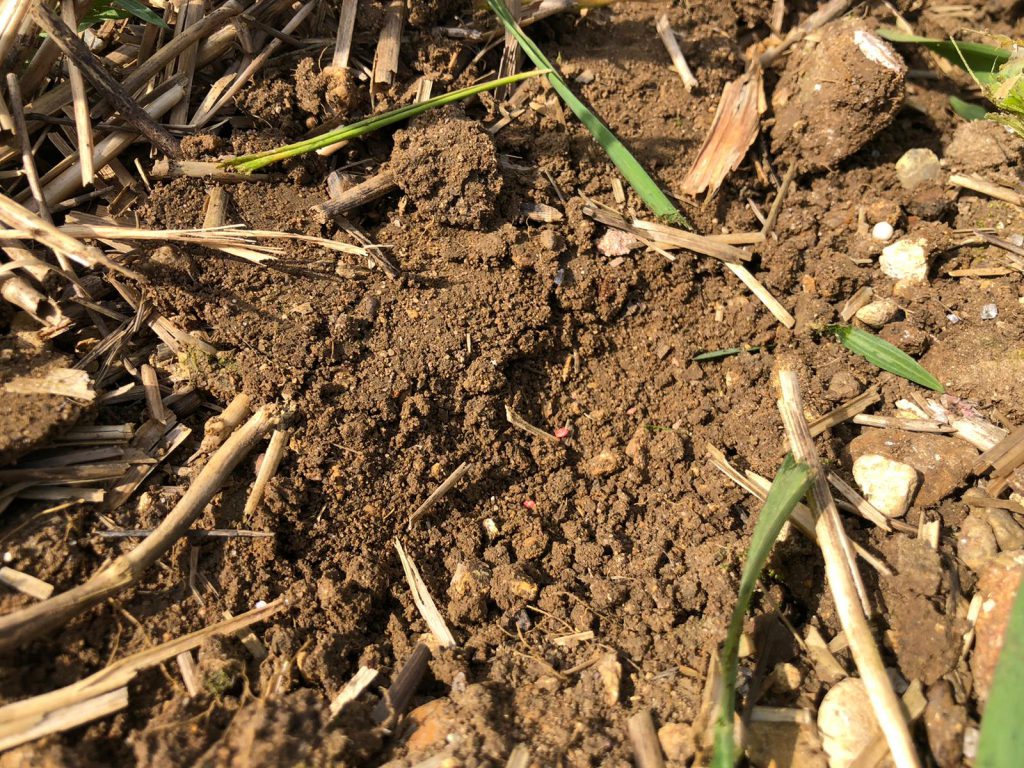Is This The New Quinoa? Discovering The Next "It" Crop

Table of Contents
The Rise and Fall (and Rise?) of Quinoa
Quinoa's Journey to Superfood Status
Quinoa's ascent was remarkable. Initially a staple in Andean communities, its nutritional profile – packed with protein, fiber, and essential amino acids – propelled it to superfood status. This led to a surge in demand, transforming it from a relatively obscure grain to a global phenomenon.
- Increased demand: The demand for quinoa skyrocketed, leading to significant price increases.
- Price volatility: Farmers in producing countries, primarily in South America, struggled to keep up with demand, resulting in fluctuating and often unaffordable prices for consumers.
- Environmental impact of large-scale quinoa farming: Increased quinoa cultivation led to concerns about water usage, land degradation, and its impact on biodiversity in some regions.
- Challenges to local communities: The increased focus on quinoa for export markets sometimes negatively impacted the accessibility and affordability of this staple food for local communities.
The quinoa price surge highlights the need for sustainable and ethical alternatives. This is where the search for the "next quinoa" becomes crucial, focusing not only on nutritional value but also on sustainability and fair trade practices. Understanding quinoa's journey helps us better appreciate the importance of finding viable and responsible replacements.
Meet the Contenders: Potential Quinoa Replacements
Teff
Teff, an ancient grain originating in Ethiopia, is a powerhouse of nutrition and boasts impressive sustainability credentials.
- High protein content: Teff is significantly higher in protein than quinoa.
- Rich in iron and fiber: It's an excellent source of essential minerals and aids digestion.
- Gluten-free: Teff provides a healthy option for individuals with gluten sensitivities.
- Drought-resistant crop: Its resilience to harsh conditions makes it a sustainable choice for arid and semi-arid regions.
- Suitability for diverse climates: Teff's adaptability makes it a promising crop for various environments.
Teff's versatility shines through in its use in porridges, breads, and even beer, making it a true culinary chameleon and a strong contender for the next superfood.
Amaranth
Another ancient grain, amaranth, offers a compelling profile with a wide range of applications.
- High in protein and fiber: Similar to quinoa, amaranth provides a substantial amount of both.
- Good source of iron and manganese: It's a valuable source of essential micronutrients.
- Gluten-free: A safe and nutritious choice for gluten-free diets.
- Relatively easy to grow: Amaranth's adaptability makes it easier to cultivate than some other grains.
The complete protein profile of amaranth, combined with its versatility in both sweet and savory dishes, positions it firmly in the running for a "next quinoa" status.
Other Contenders (Briefly)
Beyond teff and amaranth, several other grains deserve mention: fonio, a tiny grain from West Africa, known for its nutty flavor and high nutrient content; freekeh, a young green wheat grain, boasting a distinct smoky flavor and high fiber; and kaniwa, a South American grain similar to quinoa but with a milder taste. Further research into these grains can uncover more potential "next quinoa" candidates.
Beyond Nutrition: Sustainability and Ethical Considerations
Environmental Impact of Different Crops
Sustainable agriculture is paramount. Comparing the environmental footprints reveals interesting differences.
- Water usage comparisons: Teff and amaranth generally require less water than quinoa.
- Land degradation: Sustainable farming practices are crucial to mitigate land degradation associated with any grain's large-scale cultivation.
- Carbon footprint analysis: Studies comparing the carbon footprint of different grains are needed to determine the most environmentally friendly choices.
- Impact on biodiversity: Maintaining biodiversity in agricultural landscapes should be a priority, ensuring that farming practices do not negatively affect local ecosystems.
Supporting Local Farmers and Communities
Ethical sourcing is as important as nutritional value.
- Fair trade certification: Choosing fair trade products ensures that farmers receive fair prices for their crops.
- Community development initiatives: Supporting initiatives that empower local communities in producing countries is crucial.
- Direct trade partnerships: Direct relationships between consumers and producers ensure transparency and fair prices.
Conclusion
Quinoa's journey highlights the challenges of rapid popularity and the importance of sustainable food systems. While there's no single perfect replacement for quinoa, is this the new quinoa? The answer is nuanced: Teff, amaranth, and other alternative grains offer compelling nutritional profiles and greater sustainability potential. Discovering the next quinoa isn't about finding a direct substitute, but about exploring diverse, nutritious, and ethically sourced grains. We encourage you to explore these alternative grains, consider their impact, and make informed choices that support sustainable and ethical food systems. Start exploring quinoa alternatives today and discover the next big thing in healthy eating!

Featured Posts
-
 Jeff Goldblum Enlists Cynthia Erivo Ariana Grande For New Jazz Album
Apr 29, 2025
Jeff Goldblum Enlists Cynthia Erivo Ariana Grande For New Jazz Album
Apr 29, 2025 -
 Exploring The Link Between Brain Iron Adhd And Age Related Cognitive Issues
Apr 29, 2025
Exploring The Link Between Brain Iron Adhd And Age Related Cognitive Issues
Apr 29, 2025 -
 Ai Thinking More Hype Than Substance A Critical Analysis
Apr 29, 2025
Ai Thinking More Hype Than Substance A Critical Analysis
Apr 29, 2025 -
 Analyzing The Ny Times Account Of The January 29th Dc Aviation Tragedy
Apr 29, 2025
Analyzing The Ny Times Account Of The January 29th Dc Aviation Tragedy
Apr 29, 2025 -
 Willie Nelsons Wife Responds To False Media Report
Apr 29, 2025
Willie Nelsons Wife Responds To False Media Report
Apr 29, 2025
Latest Posts
-
 Celtic Loanee Eyes Championship Glory
May 12, 2025
Celtic Loanee Eyes Championship Glory
May 12, 2025 -
 Loanees Bid For Celtic Success
May 12, 2025
Loanees Bid For Celtic Success
May 12, 2025 -
 Ipswich Town Women Gwalia Game To Decide League Position
May 12, 2025
Ipswich Town Women Gwalia Game To Decide League Position
May 12, 2025 -
 Post Match Interview Sheehan On Ipswich Towns Performance
May 12, 2025
Post Match Interview Sheehan On Ipswich Towns Performance
May 12, 2025 -
 Sheehans Reaction Ipswich Towns Focus Remains Strong
May 12, 2025
Sheehans Reaction Ipswich Towns Focus Remains Strong
May 12, 2025
